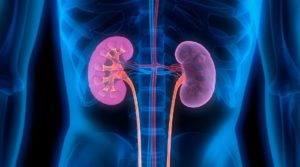Urine protein tests offer a simple way for insurance companies to obtain an important predictor of life risk. CRL recently completed an update of prior research which confirms the value of these tests and suggests an optimal threshold at which urine protein levels should be sent for albumin testing. See more from Dr. Steven Rigatti, MD, below.
A Brief Review of Urine Protein Tests
The human kidney does not normally excrete very much protein. When a kidney is damaged by diseases such as hypertension or diabetes, the filtering units of the kidney (glomeruli) become damaged and fail to keep the major blood protein, albumin, out of the urine. Thus, it is albumin that is the major indicator of mortality, mainly from cardiovascular causes. Other proteins may be detected by urine protein testing, but these are often contaminants (seminal or vaginal) picked up by the urine stream after filtration in the kidney (so-called post-tubular proteins). The major exceptions to the rule are immune proteins (Bence-Jones proteins) which may appear in the urine of those with multiple myeloma or related conditions. To properly differentiate low-risk proteinuria from high-risk proteinuria, the presence or absence of albumin is key.
The raw concentrations of urine protein are not especially useful because they vary with states of hydration. A dehydrated test subject will excrete the same amount of protein but much less water than someone who is properly hydrated, elevating both the protein and albumin concentrations. Because this is also true of urine creatinine, the ratio of protein or albumin to creatinine removes the effect of hydration. Therefore, these ratios should always be used in preference to raw concentrations if available.
Units of measure are also variable when it comes to the ratios. Some labs express them as milligrams of protein (or albumin) per milligram of creatinine, while others use a per gram ratio. The difference is simply a factor of 1,000. While an albumin/creatinine ratio (A/C) of 0.03 mg/mg is often considered the upper limit of normal, the corresponding value in mg/g is 30.
The Study
A new 2021 study sought to answer two questions:
1) Is urine albumin, in fact, a better mortality predictor than urine protein?
2) What level of urine protein most efficiently identifies those with potentially hazardous elevations of urine albumin?
This study utilized data from nearly 1 million subjects, over 230,000 of whom are known to have died during an average of 8.4 years of follow-up. All subjects had been tested for both urine albumin and urine protein. Pregnant women and admitted diabetics were removed from the analysis.
Mortality models adjusted for age and sex demonstrated a steeper risk curve for the A/C ratio than for the protein/creatinine (P/C) ratio. This was an expected finding given albumin is the true risk indicator in this situation. Those subjects whose A/C ratio was in the highest 5% for their age and sex had a mortality rate more than 4X higher than those in the lowest quartile. For the P/C ratio the comparable mortality ratio was just over 3.
Additional analysis was done to identify the P/C threshold which most accurately identifies those who have A/C levels over 30 mg/g, which is the common definition of “microalbuminuria.” This showed that a P/C ratio of 0.11 mg/mg identified 86% of applicants with microalbuminuria, and successfully ruled it out in 81% of those without. This compared favorably with the commonly used P/C threshold of 0.2 mg/mg, which missed twice as many applicants with albuminuria. Moving to this lower threshold would be expected to increase the number of urine albumin tests ordered, from about 3% to 11% in women, and from about 2.5% to 7% in men.
The full study data and conclusions can be found here.
Why this Matters to Insurers
This study demonstrates that albuminuria is a significant predictor of mortality in a life insurance population and identifies the most efficient threshold for testing based on the protein/creatinine ratio, which can help insurers make the most of their laboratory testing regimen.
About the Author
Dr. Steven J. Rigatti is a consulting medical director with Clinical Reference Laboratory, with 12 years’ experience in the life insurance industry. He is the current chair of the Mortality Committee of the American Academy of Life Insurance Medicine.






